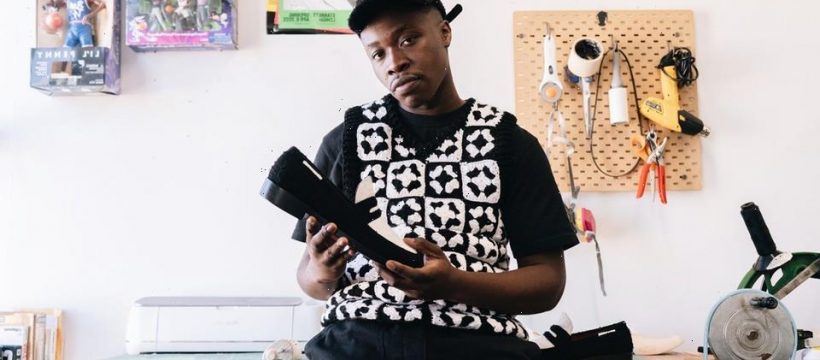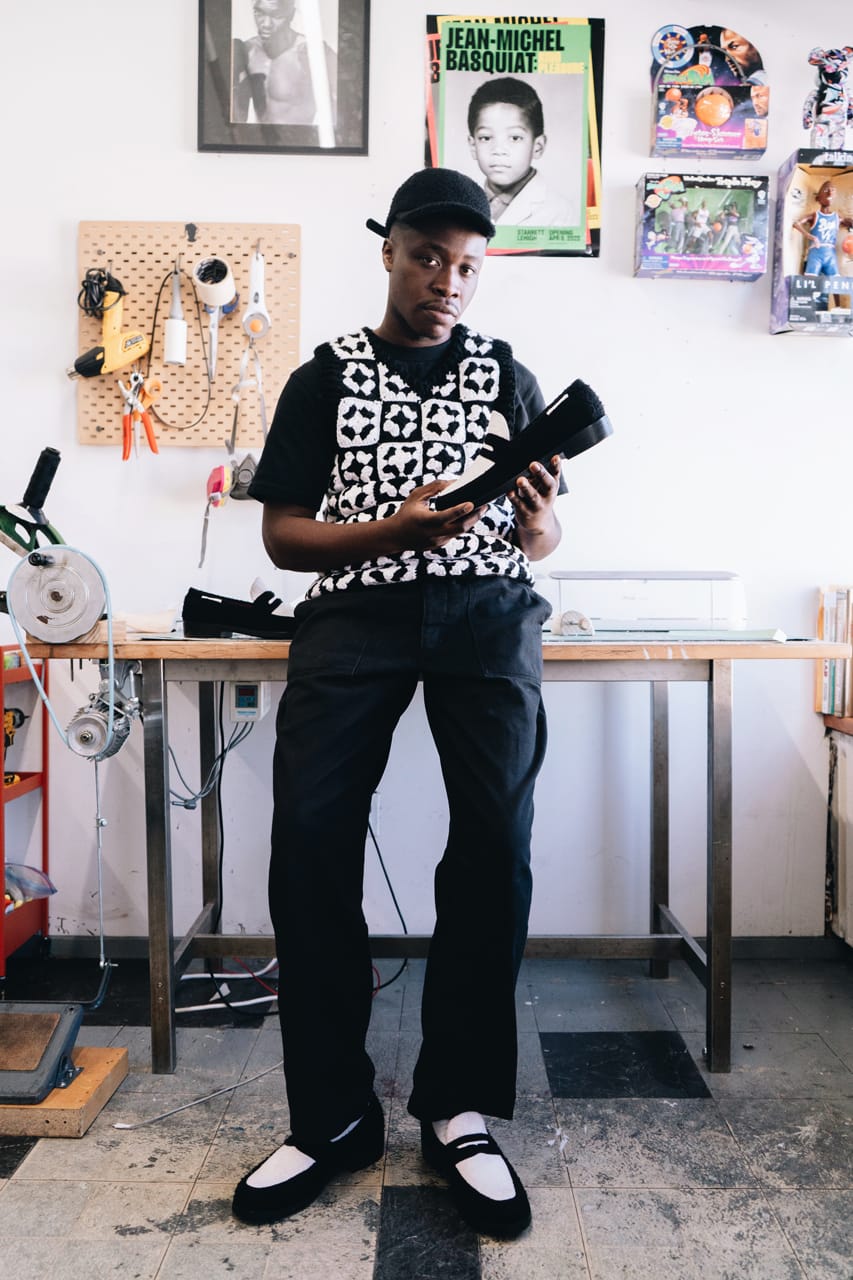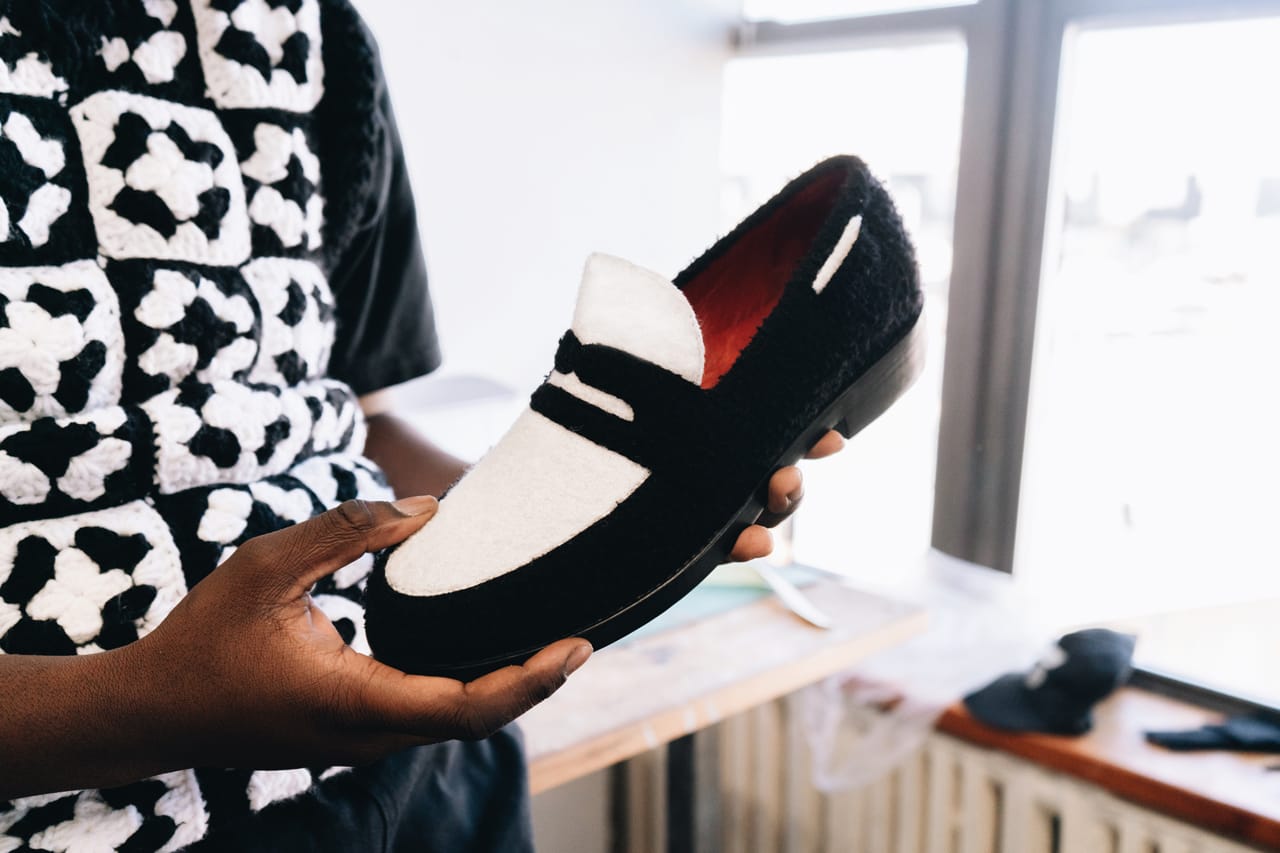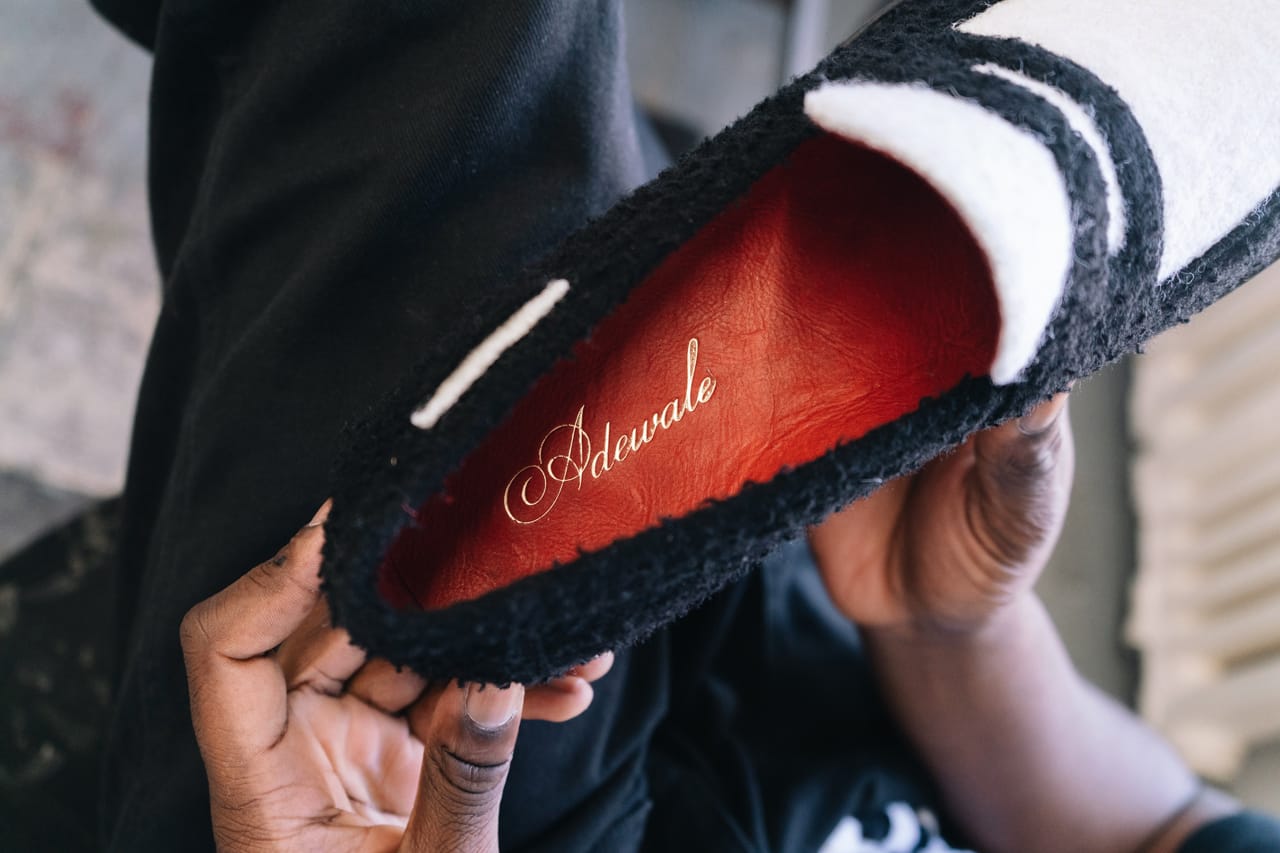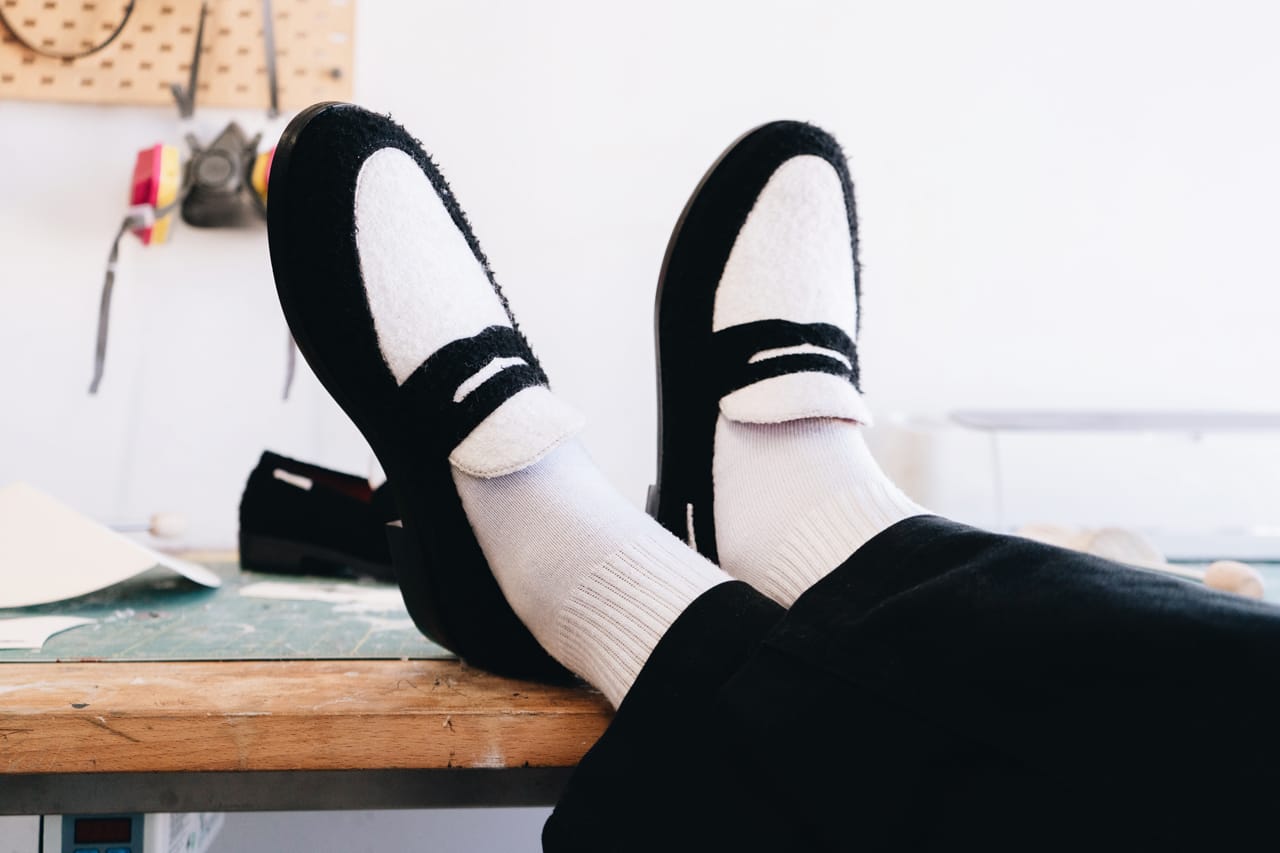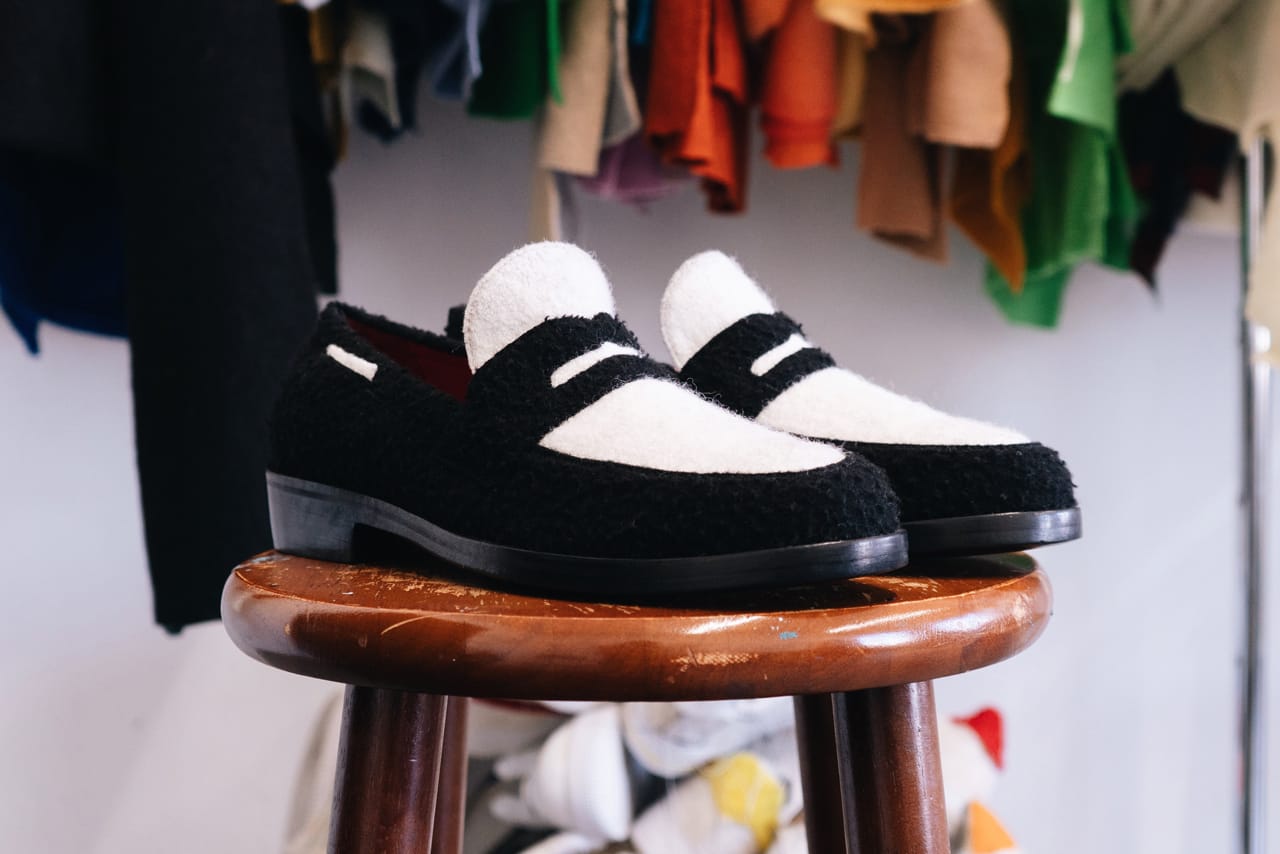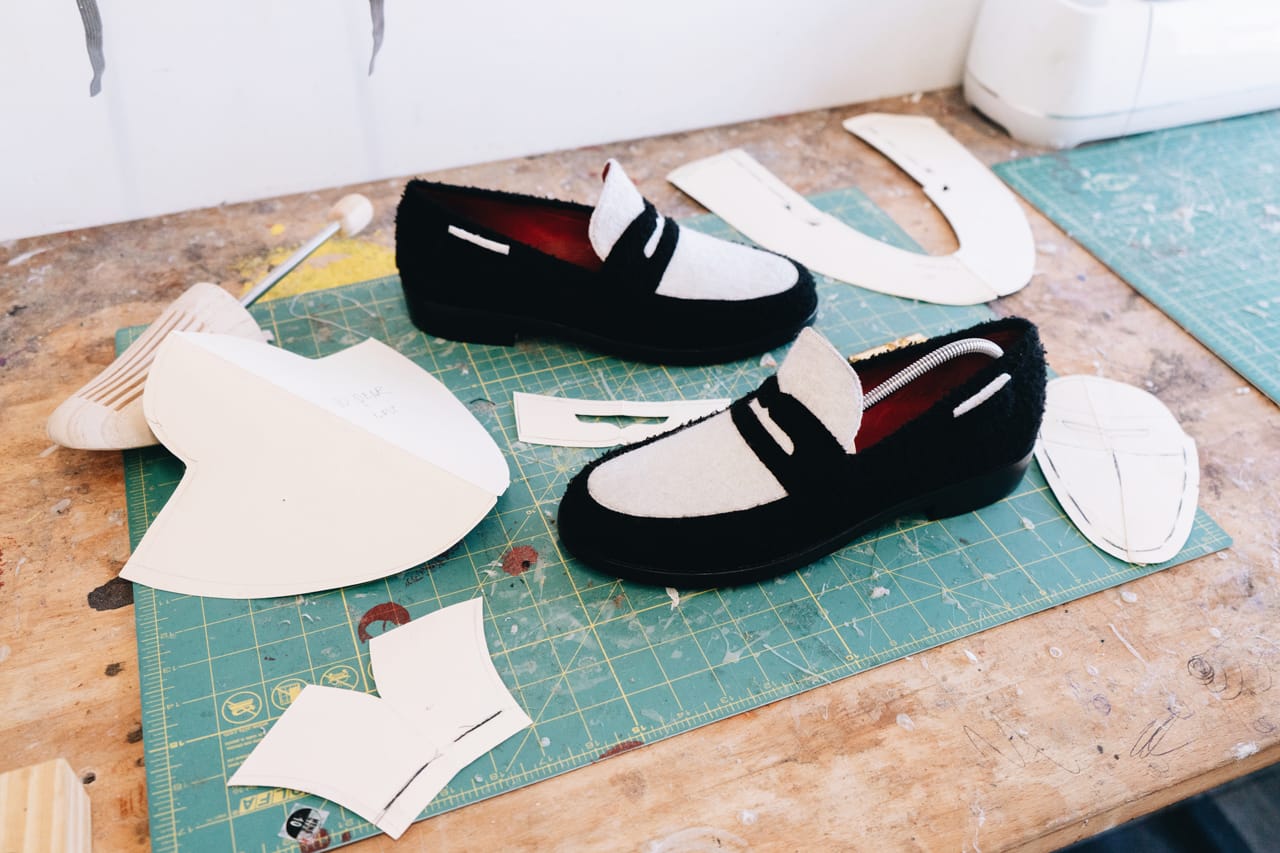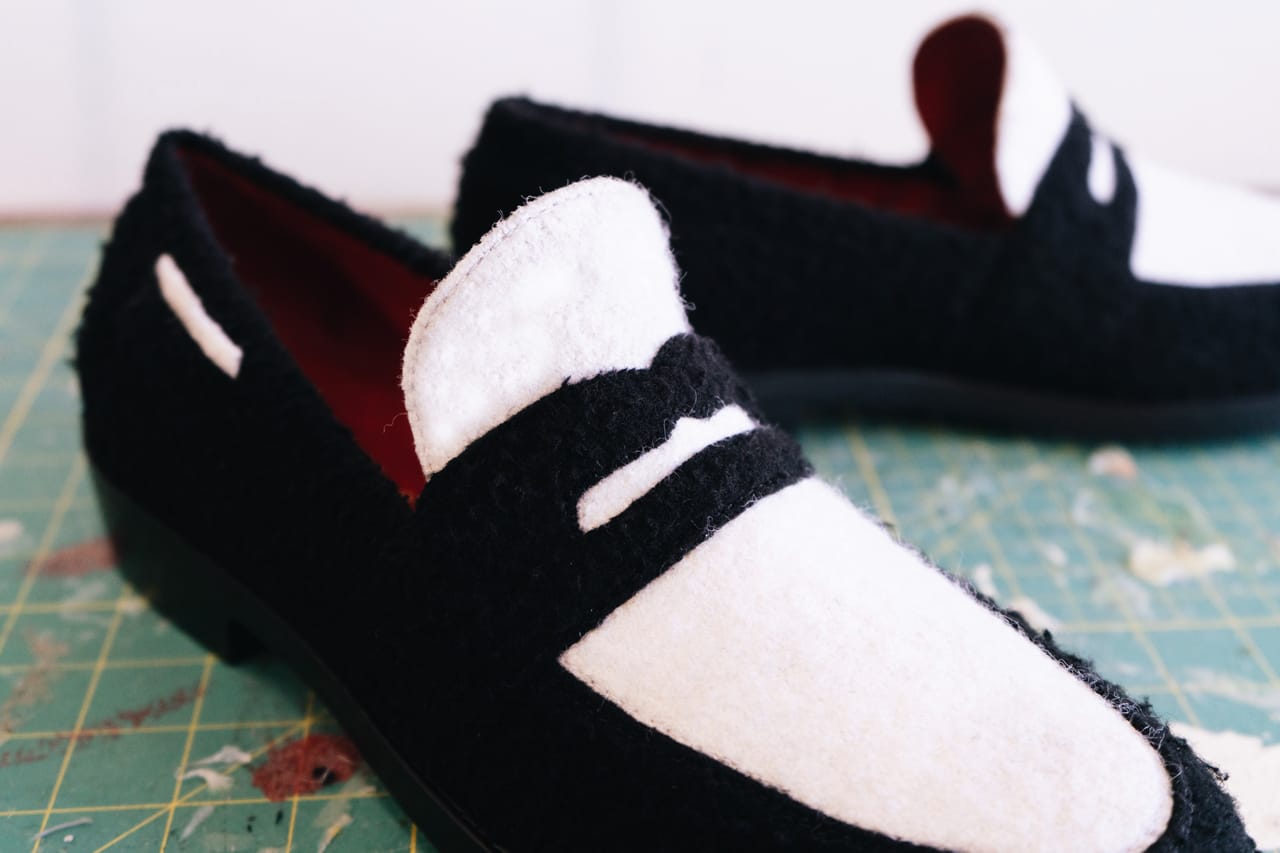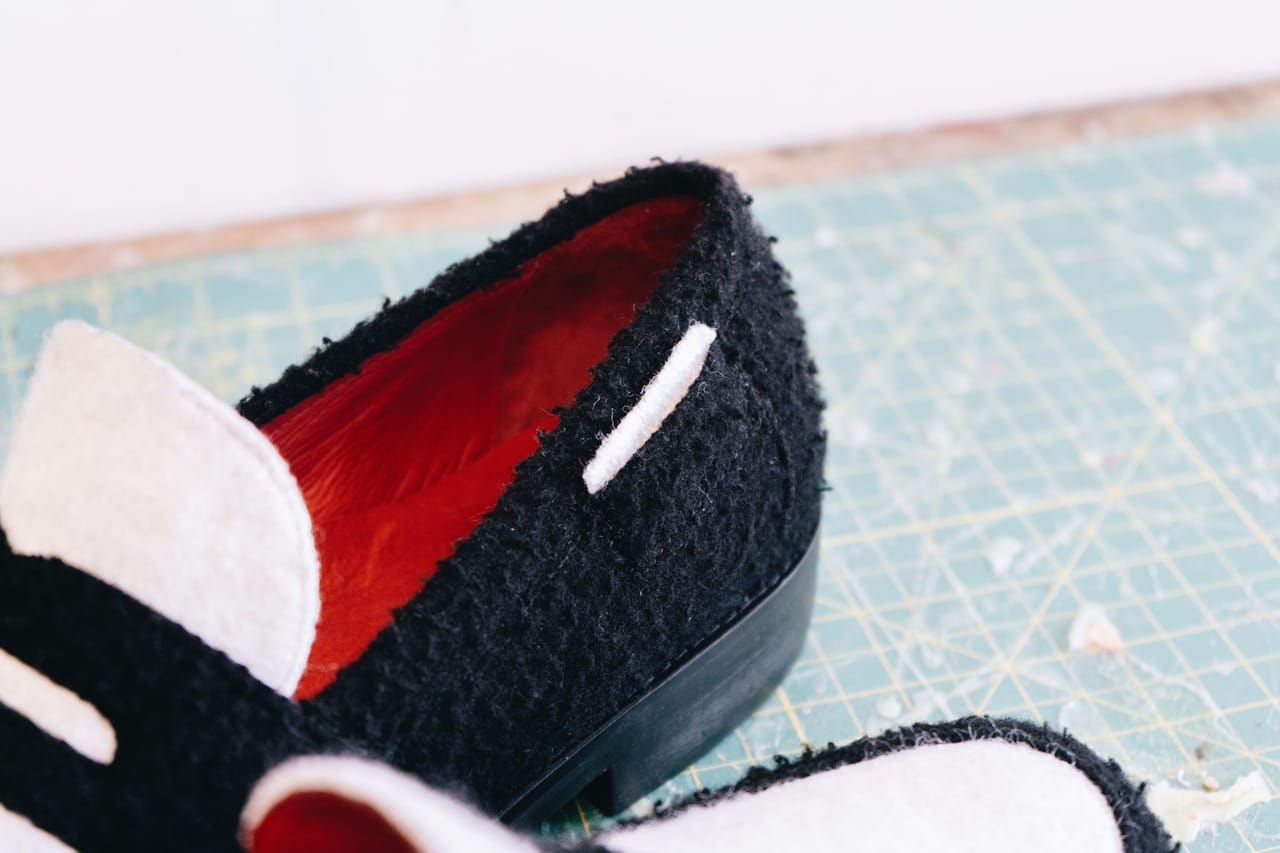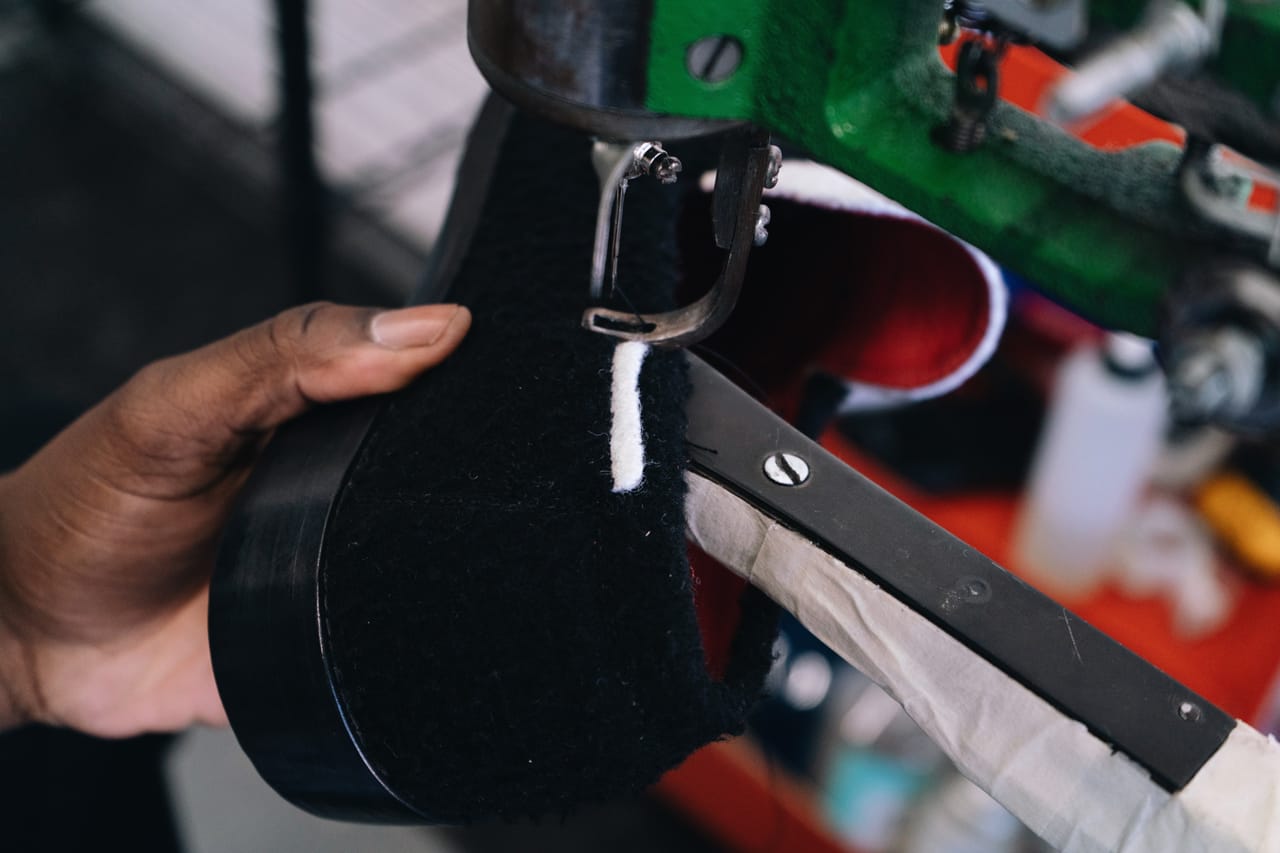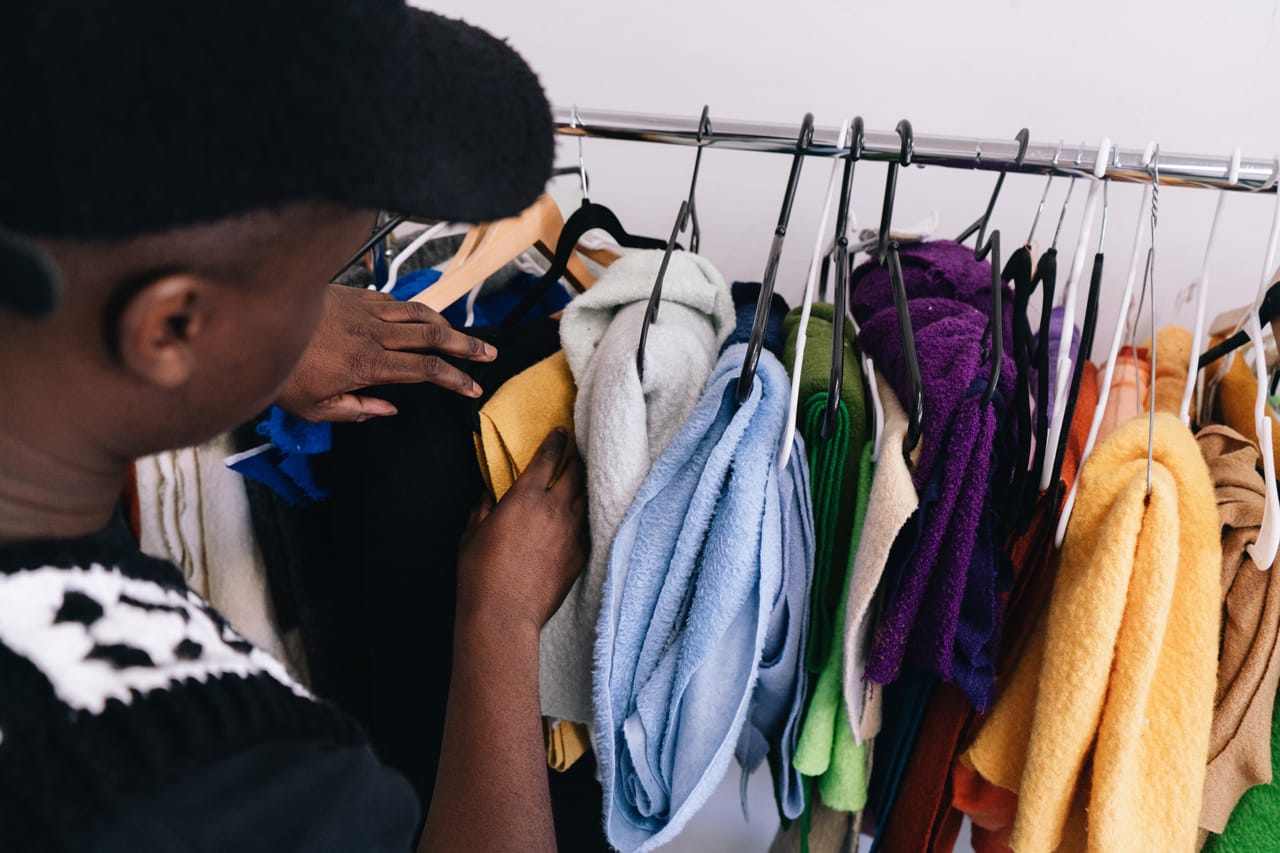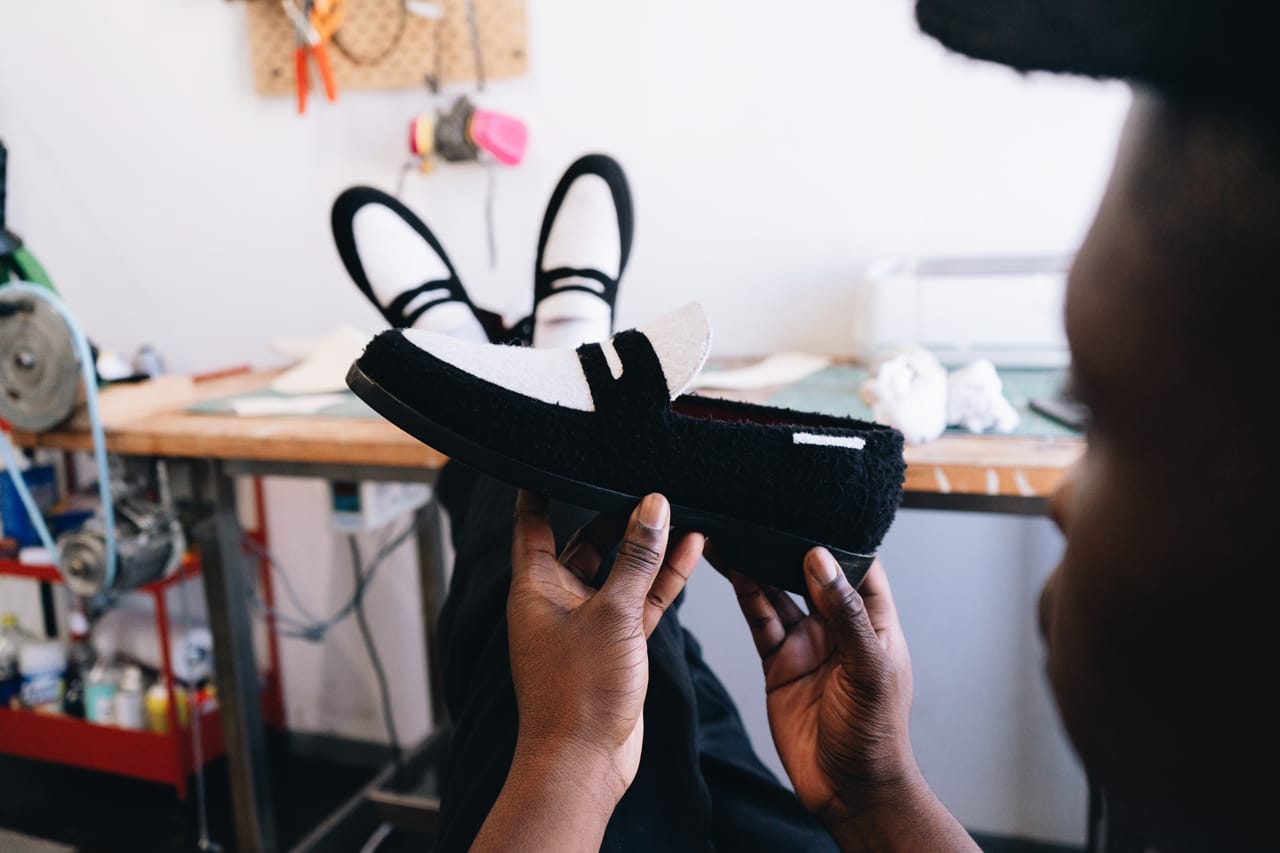Adewale Quadri, better known to his ever-growing fanbase as Dark Phil Knight, uses his custom, handmade footwear and apparel as a contemporary tribute to his Yoruba heritage. “Yoruba culture has a history of beautiful craftsmanship,” Quadri tells Hypebeast. “I’m trying to channel that in my work.”
Quadri began using a hand-crank sewing machine to adorn the Nike Air Force 1 with wool and yarn during the early days of the pandemic, using sewing to fight lockdown boredom and keep the spark of inspiration he’d received from reading Phil Knight’s Shoe Dog — the book he also took his moniker from — burning. It didn’t take long for his designs to catch fire: the very first pair he posted went viral on Instagram, and before he knew it he was making custom shoes for everyone from LeBron James to Penny Hardaway and Justin Bieber. Now, he works out of a studio in Queens, New York, where he lovingly and painstakingly cranks out hand-crafted designs on a daily basis.
Almost three full years after starting the business, Quadri has a deep mastery of his craft and is rapidly expanding his horizons. He launched Adewale, his eponymous brand that offers handmade hats and other items, earlier this year and now he’s set to drop his first-ever original shoe design: a two-tone wool loafer he calls the “Tuxedo.”
For the latest installment of Hypebeast’s Sole Mates, Adewale Quadri (or Dark Phil Knight, if you’d prefer) shows the world his “Tuxedo” loafer for the first time, speaks on his evolution as a creative, discusses the differences between reworking an existing shoe and creating his own original silhouette and riffs on how creatives can expand their artistic mediums while remaining true to their ideas.
Nicholas Llanton/Hypebeast
You’re from Chicago. What was sneaker culture like there when you were growing up, and how did it influence you?
I got introduced to the world of sneakers in sixth grade. Before then, I was going to an elementary school that had a really strict uniform policy, so I had to wear dress shoes instead of sneakers. After I got out of there, though, I was swallowed up by sneakers right away. My older brother was really into Air Jordans and my uncle got me my first pair of Ar Force 1s. Of course, being in Chicago, Michael Jordan was everywhere too. Between my family and MJ, I had plenty of influences.1 of 3
Nicholas Llanton/Hypebeast2 of 3
Nicholas Llanton/Hypebeast3 of 3
Nicholas Llanton/Hypebeast
Did your preference in sneakers inform your creative decisions and tastes as you grew older?
Yeah, I’d say so. I wanted to have shoes that other people didn’t, and for me that wasn’t necessarily about having the “rarest” shoe, it was about having the shoe with the most unique textures and materials. I always gravitated towards shoes with shaggy suedes instead of plain leather pairs, for example.
Was that love of materials what compelled you to start making your own shoes?
As long as I can remember, I always wanted to have my own “signature” sneaker. I was experimenting with upcycling materials a lot during the early days of the pandemic, and was really inspired by a “cozy” vibe, specifically vintage Nike ACG baklava fleeces. A combination of my love of materials, reading Shoe Dog and getting my hands on this old hand-crank sewing machine lead to me experimenting with making my own shoes, putting a bunch of different materials on top of them and seeing how they looked. I usually work with wool now, but I didn’t set out looking to use it: I just realized that it suited my purpose.
“I got my process and workflow down by a lot of trial and error, and I figured that if I increased the difficulty of my practice … it would elevate my work and elevate me as a person too.”
You started out making Air Force 1s, then gradually ramped up to re-crafting more intricate sneakers like the Air Jordan 1 and even the Patta x Nike Air Max 1. Did you intentionally ramp up the difficulty of your designs as you got more comfortable with your medium?
Absolutely. I just wanted to level up. The Air Force 1 became relatively simple for me to do — when I started, it took me a whole day to do one pair and now I can do a pair in about four hours. I got my process and workflow down by a lot of trial and error, and I figured that if I increased the difficulty of my practice with pairs like the Air Jordan 1 and Air Max 1, it would elevate my work and elevate me as a person too.1 of 6
Nicholas Llanton/Hypebeast2 of 6
Nicholas Llanton/Hypebeast3 of 6
Nicholas Llanton/Hypebeast4 of 6
Nicholas Llanton/Hypebeast5 of 6
Nicholas Llanton/Hypebeast6 of 6
Nicholas Llanton/Hypebeast
It’s been a pretty crazy journey for you. The very first pair you posted went viral, and now people like LeBron James, Justin Bieber and Penny Hardaway wear your work. We could talk about that at length, of course, but that part of your story is already out there and we’re here to discuss a new chapter for you: the “Tuxedo” loafer, your first top-to-bottom original footwear design. What made you want to do a loafer for your first shoe?
I wanted to tap into my younger self, and in that process, I had a full-circle moment. When I was a kid, I wore loafers and dress shoes because I had to, not necessarily because I wanted to. Besides that, I wanted to take a classic, elegant silhouette and give it a unique twist.
Is the “Tuxedo” loafer a launching point for you to expand your practice even further? Are you hoping to experiment with other materials or different items in the future?
Absolutely. I just did a watch strap for a bespoke order, and am eventually interested in working with furniture as well. I’m also expanding into knitting with [my brand] Adewale — I’ve been making custom-crocheted baseball caps and bucket hats, and want to make sweaters and cardigans too.1 of 3
Nicholas Llanton/Hypebeast2 of 3
Nicholas Llanton/Hypebeast3 of 3
Nicholas Llanton/Hypebeast
What were the main differences between reworking an existing silhouette and building a new one from the ground up?
Although they’re different processes, the idea remains the same: deconstruction to reconstruction. Ultimately it comes down to reworking, adding and subtracting minor details to make a shoe unique. I found that the ethos for each was pretty similar although the look was different.
How do you think the “Tuxedo” loafer will speak to your current audience, who are mostly used to you making sneakers?
I think that they’ll enjoy it, and am pretty sure they won’t think I’m stepping too far out of the box. Sure, a loafer is a different type of footwear to work with than a sneaker is, but the focus is the same: elegance, minimalism, authenticity and a unique material choice. I always have loved sneakers and always will, but I wanted to expand my horizons a bit.
Do you have a favorite detail on the design?
The hand-stitched pocket on the lateral heel. It’s just big enough to put a penny in, so I thought it was a fun and different way to salute a classic “penny” loafer.
“The foundational idea behind why I design and how I design ties my work together in a way that transcends mediums.”
How do you expand your artistic mediums while remaining true to the unique idea you had in the first place?
The idea of transforming something familiar into an entirely new object is why I started creating shoes in the first place. From the start, my main focus was implementing comfort, elegance and quality within my designs — but making sure to experiment and try new things as well, which is what I’m doing with Adewale. I think that the foundational idea behind why I design and how I design ties my work together in a way that transcends mediums.
Last question: why are sneakers important to you?
Sneakers are important to me because they’re a feeling. They take me back to good times in my life, like when I got that first pair of Forces from my uncle. Memories like that are what make sneakers special.
Source: Read Full Article
